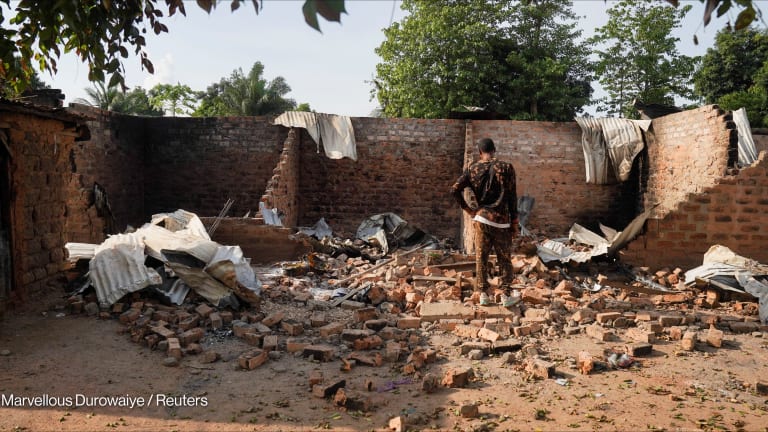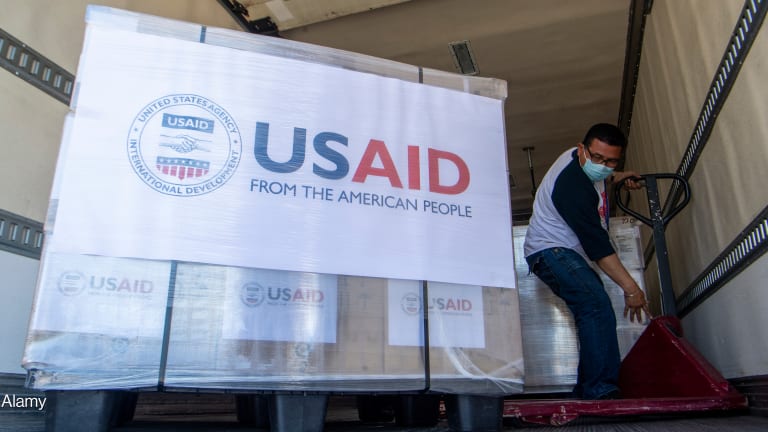
WASHINGTON — The U.S. government should focus implementation of the Global Fragility Act primarily on countries in Africa, according to a civil society analysis released Tuesday.
Global Fragility Act passes as part of US budget deal
The Global Fragility Act, which aims to promote a whole-of-government approach to the prevention of violence and conflict, will become law after its inclusion in the overall fiscal year 2020 spending package.
The working paper, produced by the Alliance for Peacebuilding and One Earth Future, for the first time publicly recommends priority countries for both stabilization and prevention activities as mandated by the GFA. The bill, passed in December, requires the U.S. government to develop a Global Fragility Strategy and identify priority regions and countries in which to pilot a new prevention-based approach to fragile states drawing from lessons learned from decades of failed U.S. foreign interventions.
The analysis identifies priority stabilization countries to be Cameroon, Nigeria, Chad, and Niger of the Lake Chad Basin region, as well as Afghanistan, Somalia, Sudan, South Sudan, and Yemen.
Myanmar, Ethiopia, Bangladesh, Uganda, and the Sahel region — including Chad, Niger, and Burkina Faso — are prime candidates for prevention countries, it said.
Elizabeth Hume, vice president of the Alliance for Peacebuilding and co-author of the report, said the analysis was meant to emphasize additional criteria that should be taken into account when determining whether a country or region is a good fit for the GFA.
“The law clearly set out very specific requirements on how you would select countries. In addition to that, there were elements that also needed to go into it. Don’t just take the list of requirements that Congress set out in the law for the selection of prevention and stabilization countries,” Hume said.
“Some really key points that also have to go in there in terms of country or region is, ‘is the [U.S. Agency for International Development] mission and embassy on board? Is this something that they will implement to the best of their abilities?’”
“Once the feedback loop of violence has begun, it is significantly more difficult to stop the violence than it would have been to prevent it through earlier interventions.”
— “Getting from Here to There: Successful Implementation of the Global Fragility Act”The GFA says the administration must consider U.S. national security interests, levels of fragility, and capacity and commitment of local governments and actors to meaningfully address fragility or the risk of violence. The administration will then produce 10-year strategies to pilot a prevention approach.
To determine its stabilization priority country suggestions, the Alliance for Peacebuilding and One Earth Future analysis used publicly available reports of violent events to aggregate deaths from state and non-state violence from 2014 to 2019, both in aggregate and per capita. Where conflict patterns spilled across state lines, countries were grouped into regions. To determine prevention country recommendations, the authors examined predictors associated with conflict and assessed the risk of violence that could lead to 1,000 or more deaths.
The potential influence of U.S. government activities and host government capacity and relationship with the U.S. must also be considered, the analysis said.
This analysis conducted by civil society is not the only way to determine where the GFA approach could be most effective, but it is vital that the method the government ultimately uses to select the countries be data driven, according to the paper’s authors.
“Regardless of how a prevention country or region is identified, it is important that countries at risk of conflict but not yet down the path to conflict are selected alongside countries targeted specifically for stabilization,” the analysis said.
“Once the feedback loop of violence has begun, it is significantly more difficult to stop the violence than it would have been to prevent it through earlier interventions. As such, it’s important to select countries that have not yet begun the slide to violence.”
The Trump administration must select at least five priority countries or regions in its Global Fragility Strategy by the congressionally mandated deadline of Sept. 15, and will then have until December to produce country-specific strategies. At least two of those countries must be prevention countries.
A congressional aide who was not authorized to speak on the record told Devex that despite the COVID-19 pandemic, Congress is expecting the administration to meet that deadline and feels confident it will do so. The GFA mandates consultation with Congress on country selection and the aide said lawmakers expect to provide input.
Eythan Sontag, senior adviser at the State Department’s Bureau for Conflict and Stabilization Operations, said the administration is conducting consultations as it works to produce the Global Fragility Strategy and it is important the process is “inclusive.” The department has not publicly disclosed countries under consideration for the Global Fragility Strategy.
Implementation of the GFA must closely tie together with principles outlined in the administration’s Stabilization Assistance Review, Sontag said, speaking at a Center for Strategic and International Studies online event. That 2018 document outlines how the State Department, USAID, and the Defense Department can more effectively coordinate in stabilization contexts.
As a part of Stabilization Assistance Review implementation, the State Department requested that a dozen embassies develop stabilization strategies, efforts that have been delayed by COVID-19. Sontag said it is important for the U.S. government to distinguish between working in stabilization contexts, which are generally transitional, and prevention contexts, which require more time.
“What we can say at this point is that it's very likely that some of those countries that are part of the SAR process will very possibly also be part of the GFA country selection process,” Sontag said.








